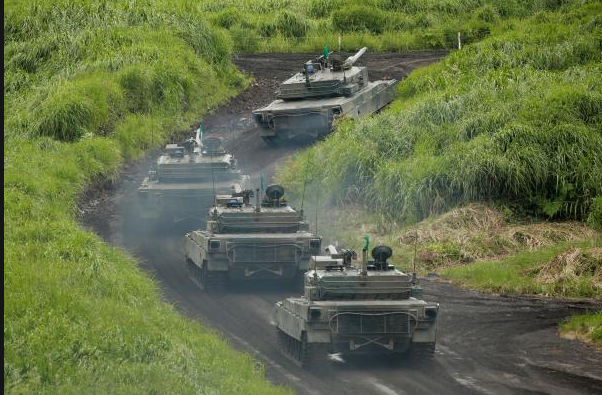
By Xu Yongzhi
The Japanese Ground Self-Defense Force (JGSDF) recently held a ceremony that officially signified the formation of the missile force at its station on the Miyako Island that is located on the southwest of the Ryukyu Islands and only 380km or so away from the island of Taiwan in the west. Japan began to deploy self-defense troops on the island in March 2019, where there are currently about 700 troops at the camp equipped with the Type 03 medium-range surface-to-air missile and Type 12 surface-to-ship missile.
Deploying JSDF on the Miyako Island is an important part of Japan’s efforts to reinforces its military strength in the southwest.
First, these islands are important reconnaissance footholds.
Monitoring capability has been a priority in Japan’s military development since 2010. The reconnaissance force stationed on the Yonaguni Island, with a monitoring scope of up to hundreds of kilometers, is called the “eye in the southwest” by Japanese media. With this, the resident Airborne Warning and Control System (AWACS) on Okinawa, and the newly deployed missiles, Japan is better placed to detect naval and air force activities in its surrounding waters, and the JSDF will be able to identify abnormalities much sooner.
Second, the islands are preset positions for the future replenishment of troops.
The then Japanese defense minister Takeshi Iwaya said in 2019 that forming a new force to fill in the defense blank can enable Japan to quickly cope with disasters and other incidents as well as deploy other troops. According to a document of the Japanese Defense Ministry released by a member of the Japanese Diet, in 2012, Japan envisaged the scenario of sending thousands of troops along with heavy equipment to the Ishigaki Island. The new bases and arsenals built on those islands will serve as positions where more troops can be deployed quickly at times of crisis. As a result, the JSDF will be better able to deal with the medium or small crisis it envisaged.
Third, the islands are seamlessly connected “missile wall”.
From the north to the south, the southwestern islands include Amami, Okinawa, Miyako, Ishigaki and Yonaguni, mostly 200-300km from each other. The Type 12 surface-to-ship missile has a firing range of about 200km. Japanese media commented that Japan is building a “missile wall” on those islands, where the country will deploy years later the longer-range anti-ship missile and a hypersonic missile that are under development now. At that time, not only the ships that cross the island chain, but also targets on the Chinese coast will be covered by the missiles, so that Japan can help the US reinforce its deployments in the region.
Japan has also taken a string of military moves in addition to reinforcing island deployments, including enlarging the amphibious combat troops, buying the Osprey transport aircraft, building new landing ships, deploying more fighter jets and AWACS on Okinawa, and building warships specifically for patrolling the East China Sea. Moreover, Japan Coast Guard has successively completed the so-called “guard system for the Diaoyu Islands and their surrounding waters” and the “24-hour monitoring system”, and the National Police Agency has set up a team that can be transported by helicopter to carry out missions on offshore islands. While taking all these preparations, Japan has organized a number of targeted military and cross-departmental exercises in the past decade.
That Japan hasn’t slacked its steps in reinforcing the military presence in the southwest despite its thawing relations with China reflects the country’s two-facedness. Behind its series of troop-enhancing moves is Japan’s intention of strengthening its “deterrence” as well as consolidating the Japan-US alliance. Whoever started the trouble should end it. Only when Japan adheres to its commitments in the four China-Japan political documents and faces up to problems squarely will it be able to achieve a peaceful East China Sea of cooperation and friendliness and contribute to regional prosperity and stability.
(The author is from the Institute of Northeast Asian Studies, China Institute of Contemporary International Relations)













